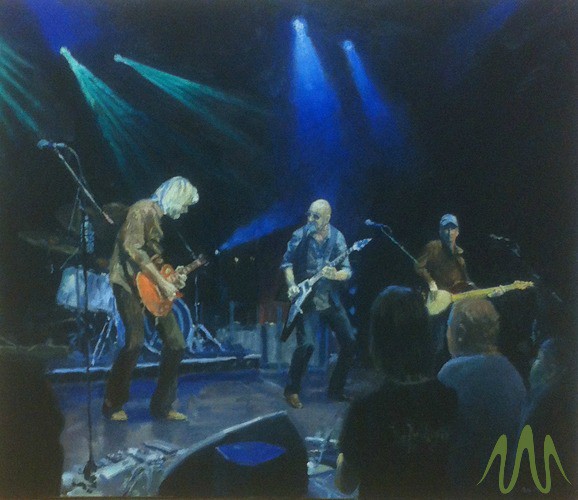
By: Pete Marsh, professional artist

My Background:
From an early age I was introduced to music through my parents. My mother listened to Jazz, big band dance material like Duke Ellington. Later on as a teenager I would arrive home to find my mother listening to my Wishbone Ash albums, so I guess we’ve influenced each other over the years. Art was always my favourite subject throughout school and although I left school at 16 years of age I eventually completed an Art Foundation course and then went on to complete a Fine Art degree in 1982. During the mid 1980s, I worked as stage crew at a small music venue in Manchester called The International 1 and I later worked on the stage crew at Manchester Apollo. During this period I worked on gigs involving David Bowie, Bon Jovi, Metallica, Alice Cooper, Iron Maiden, Genesis and Madonna to name a few! For me, it seemed a perfectly natural thing to try to capture the atmosphere of a live music performance. Even as a teenager I could often be found drawing guitarists.
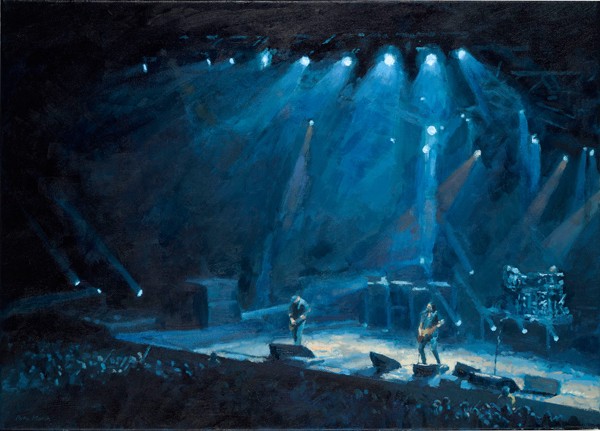
My Artistic Process:
My favoured approach is to firstly gain access to the sound-check. I value drawing from life and there is no better way to understand a subject than to draw them. When you draw, you look and when you look, you see. As Ingres once said, “Drawing is the probity of art. To draw does not mean simply to reproduce contours; drawing does not consist merely of line: drawing is also expression, the inner form, the plane, the modelling. See what remains after that.” Sketching during a sound-check has to be done rapidly. Musicians often move around more during the sound-check than they do during the concert. Trying to capture the nuance of the little finger on the fretting hand of a guitarist or the posture of the lead vocalist by sketching them provides a greater understanding than taking photographs. It is usually far too dark during the actual performance to sketch and I prefer to be as discreet as possible during the gig. It is important for me to photograph the band during the gig, but it is equally important for me to experience the mood and atmosphere. Whilst I do take lots of photographs I also want to drink in the atmosphere of the concert and get a “feel” for the whole thing. I may take as many as a hundred photographs, but I also rely on memory. It may well be that a certain reflection or a silhouette or a particular flash of coloured lighting excites me, but these things sometimes do not appear on any of my photographs. Nonetheless if they are locked in my memory I can include them in the painting.

I tend to work out the composition of a painting by using digital manipulation techniques on a computer. Musicians, mic stands, speakers and the audience do not always stand in the best place at the same time during a performance. What works in real life does not always work in a piece of art. Using digital techniques I can experiment with various poses, positions and lighting fairly quickly and certainly much faster than painting it and then painting it out. I do not take too much care in merging these digital montages, as long as the composition and scale is right then I am happy enough. A graphic designer would probably wince at these digital “sketches”. They say never say never, but so far I have never used other people’s photographs and I have turned down commissions because I only paint gigs that I’ve attended. The final image, therefore, is built from sound-check sketches, photographs and memory. I tend to work very quickly at first painting alla prima (wet on wet) and will often use a coloured ground to provide a mid-tone. Once the painting is underway I use a variety of techniques and methods scraping away paint with a palette knife, scumbling dry-paint over the texture beneath, applying paint as impasto and occasionally utilizing thin glazes and/or washes. Rags, brushes, palette knives, bits of card and fingers are all employed to apply paint to canvas!
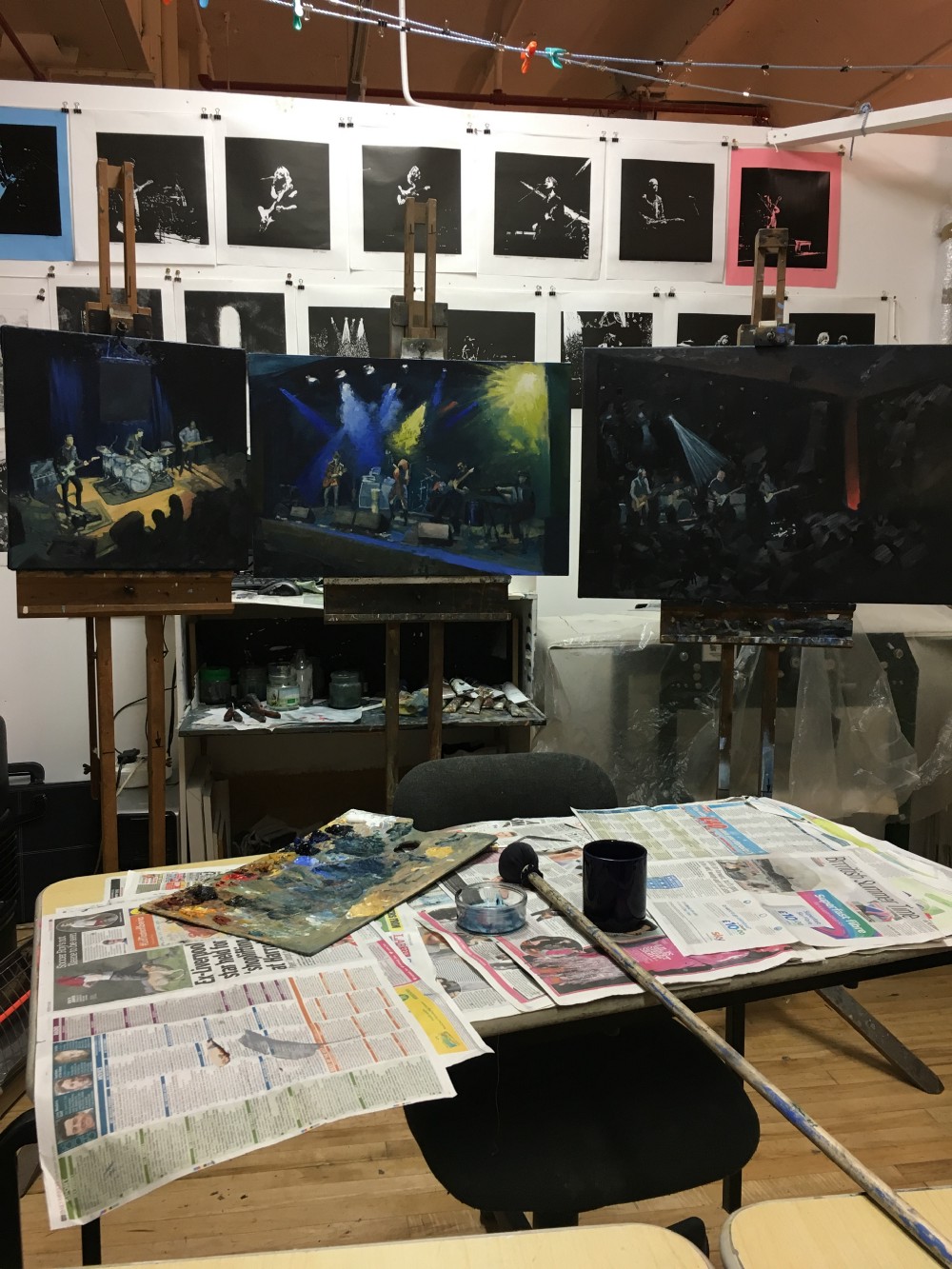
My Inspiration:
The inspiration of the music paintings and prints is simply live music performance. There is often nothing simple about the complex relationships that exist or that develop between musicians and the audience during performance. Active and passive fluctuate between performer and audience, elements of hero worship, stage persona, tensions, understandings, appreciation, and excitement permeate the air. Lighting and colours excite or quiet passages soothe and placate. Performers can seem isolated and also totally united or integrated during the same gig. And what about the concert-goer? What is their contribution? All these things and more form the atmosphere and “feel” of a concert. My overriding quest is to try to express something of this atmosphere. I am not too concerned with topographical details and I will manipulate the image so that it works as a painting. The final work will very often represent a number of moments during the gig rather than just a “snap-shot” of one moment. My disregard for topographical details does not extend to poor representational “drawing”… I cannot have Slash looking like Kenny Wayne Shepherd or a Fender Strat that looks like a Les Paul! I like the words of the French painter, Corot, when he said, “Beauty in art is truth bathed in an impression received from nature. I am struck upon seeing a certain place. While I strive for conscientious imitation, I yet never for an instant lose the emotion that has taken hold of me.”
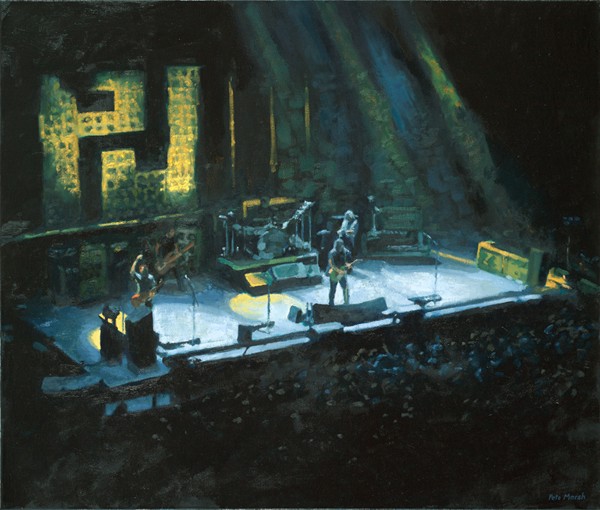
My Timing:
The length of time a painting takes to complete varies. I will usually have at least two or three unfinished paintings in my studio. This allows some passages to dry before I re-work them. It also allows me to turn them face to the wall so that I can rest from them. When I turn them back around I see them with fresh eyes. I will usually work on music inspired paintings over a number of weeks but then there have been ones that were completed in a couple of days…but that is unusual. On occasion, a painting will need varnishing because there are matt and glossy patches caused by different techniques. This often occurs if I’ve uses glazes as well as scumbles. These painting must dry for at least six months before they can be varnished…happily this doesn’t happen very often.
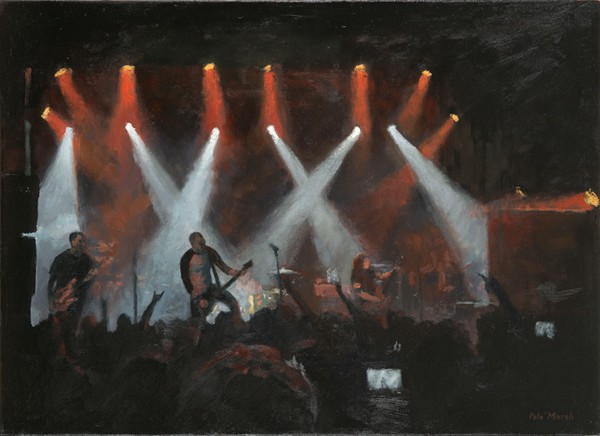
My Own Style:
I do not set out with a common theme as such. If I do have a theme it is to express the feel of a live music performance, but obviously this can change from concert to concert and even during the same concert. The paintings are almost always painted from the standpoint of the punter, the audience, the concert-goer. Even though some bands have permitted me access to the gap in between the front of the stage and the security barriers, I have never taken them up on this kind offer. This position provides photographers with great angles for portrait shots of the band (and I admire many of them), but that’s not what my work is about.
At present I have three paintings underway, three more which have been digitally “composed” but not yet started on the awaiting canvasses and I have tickets for two more gigs within the next few days! I have just been named as “Artist-in-Residence” at The Great British Rhythm and Blues Festival in Colne in August 2017! Busy times ahead!
~Pete Marsh
For more info visit: Pete Marsh Fine Art | @PeteMarshArt
All images featured are original art by Pete Marsh.
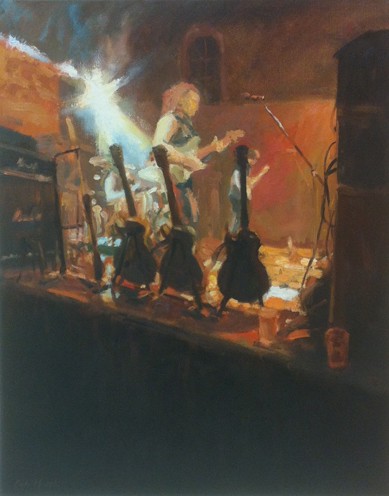
In collaboration with Jeff Gorra — Artist Waves.
If you enjoyed, please recommend below. Follow Artist Waves on: Facebook, Twitter& Medium
Contact: jeffgorra@gmail


